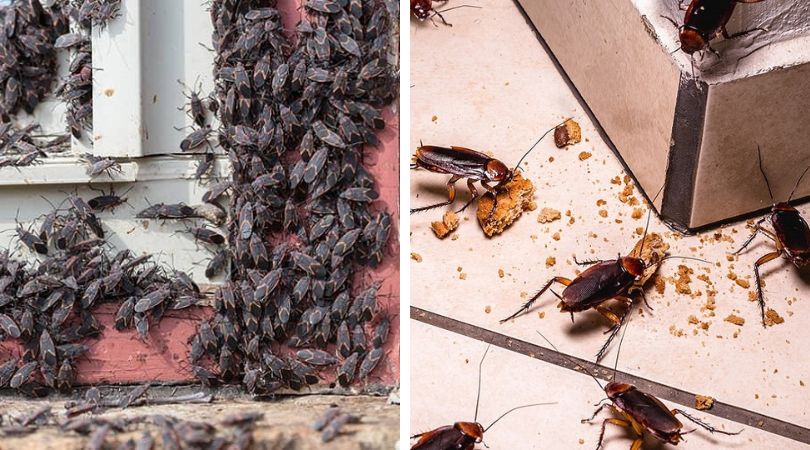Every living thing, including insects, deserves a decent home on this planet. However, no one would ever want that in their own house. We may not welcome them, but bugs and other critters often find their way inside our homes. But we don’t have to invite or allow bugs to stay.
Here, you’ll find out how to get rid of some of the most common household pests.
Stink bugs
In warm weather, stinkbugs thrive and multiply outside; in cooler weather, they seek refuge inside. Don’t swat or squash shield bugs if you see them in your home. When agitated, stinkbugs give off a putrid odor that serves only to draw more of the insects. Attempt to get rid of the insects by vacuuming the area. The only catch is that you’ll need to take the vacuum bag outside to dump it when you’re done.
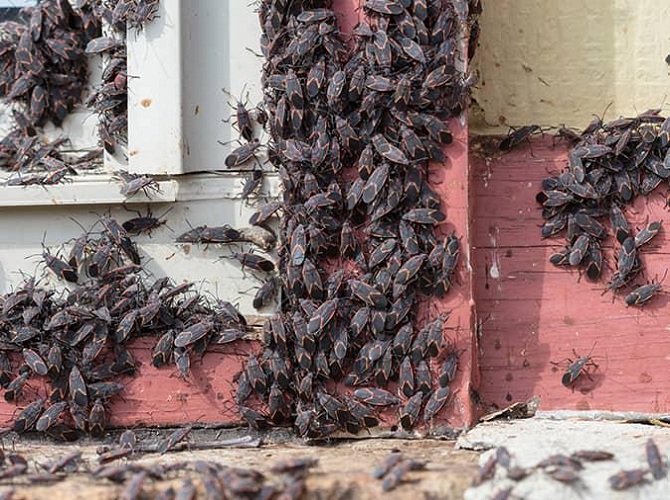
Weevils
Weevils usually enter your home by sneaking into your groceries. Adult weevils hide their eggs by burrowing into rice and other grains, so you might not notice you brought home a pest problem until the little buggers crawl out of their hiding places and start eating everything in sight.
Quickest way to get rid of pests? Purge. Get rid of any dry foods that aren’t sealed, like flour, cornmeal, oats, rice, pasta, and prepackaged foods that don’t have pouches that are sealed. Then, get rid of any sealed boxes of food that you no longer plan to use.
Weevils might not eat these things, but they might sneak inside the boxes to hide and then contaminate your food later. When you’ve finished throwing out the spoiled food, clean the pantry shelves and spray the area with a household insecticide. You can restock once the liquid has dried.
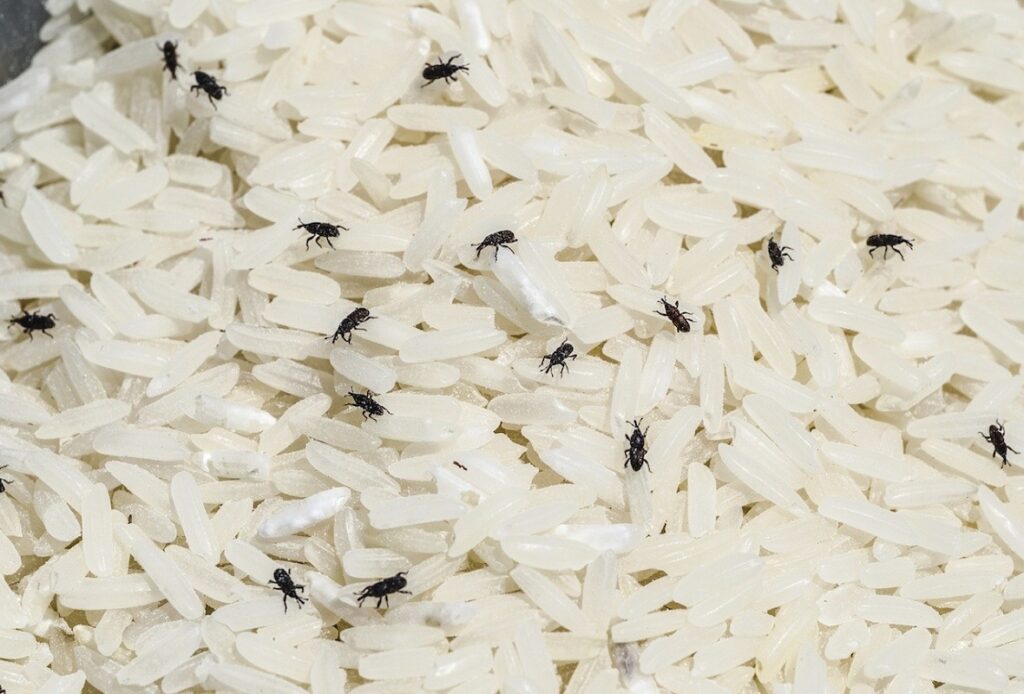
Cockroaches
Cockroaches are a widespread issue across the United States, particularly in urban areas. A single sighting in the kitchen or bathroom is usually indicative of a much larger population. Cockroaches are difficult to eradicate once they have established a foothold, so aggressive, prompt, and continued action is required.
Put down insecticide or roach traps in places where they might hide, like behind the sink, the toilet, the fridge, and other appliances. New cockroaches will hatch, so you’ll need to replace traps and reapply insecticide on a regular basis.
Take precautions to make your house less appealing. Take out the trash every day, store food in airtight containers, and clean up after every meal to remove all potential food sources for pests. When the dogs and cats have finished eating, it’s a good idea to clear out their bowls and throw away any uneaten kibble.

Carpet Beetles
An adult carpet beetle will not harm your home. Unfortunately, this cannot be said for their larvae. The larvae of the carpet beetle can chew holes in a wide variety of fabrics and paper. You might not even realize you have an infestation until you see the damage the pests have already done. Do some cleaning if you find something suspicious.
Take care to dust and vacuum thoroughly to get rid of the dust bunnies and cobwebs that could provide a hiding place for these insects. Then take everything out of your closets and drawers and either wash it or send it to the dry cleaners. Last but not least, apply an insecticide, boric acid, or diatomaceous earth to your rugs to eliminate any lingering larvae.
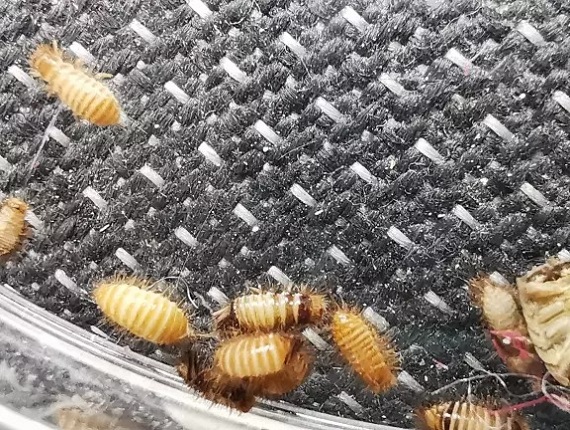
Fruit Flies
It’s incredible how fast a fruit fly problem can escalate. While you might only see one fly buzzing around your fruit in the morning, by the time you get home from work, you might see six. It’s not your imagination; there are a lot more flies than there were before. You need to get rid of fruit fly larvae as soon as possible because they only take 24 hours to hatch from the eggs.
Store all soft fruits in the fridge to deny them access to food. You should also empty the trash and recycling cans every day and wipe down the cutting boards and countertops right after using them. If you still see a few fruit flies after taking these steps, you can make a simple trap by filling half of a small tumbler with apple cider vinegar. Then, put a tablespoon of dish soap in the glass and fill the rest with warm water. The flies can enter the tumbler, but they can’t leave it.
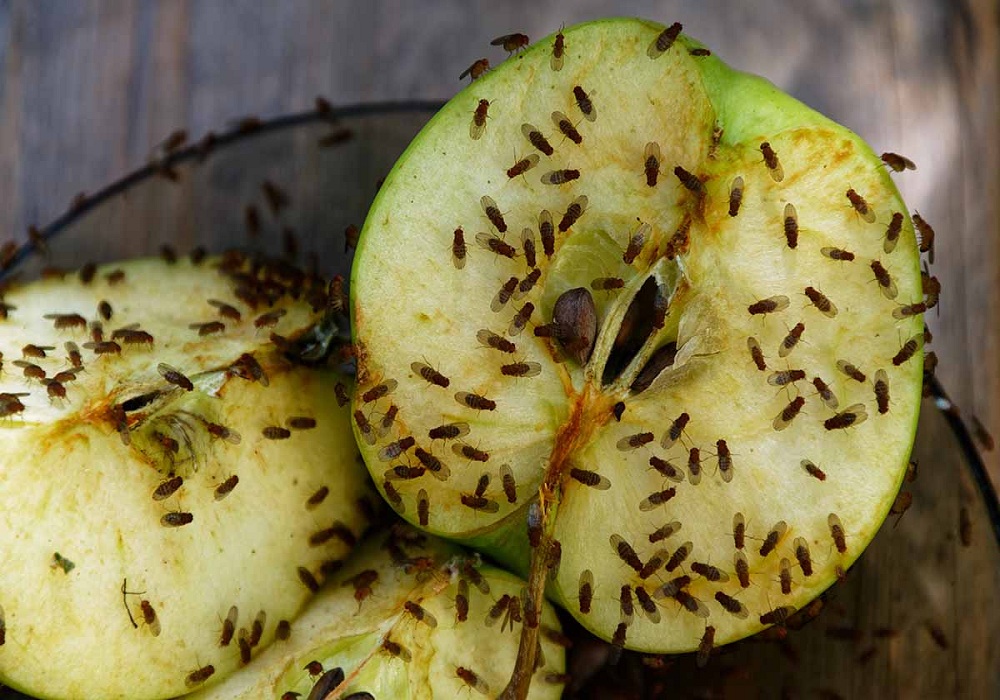
Ants
The tiny but persistent pests known as ants can cause a lot of damage to a home. When they break in, the kitchen and bathroom are the first places they look for food, water, and a safe place to rest.
Although ant bait traps are highly effective, they should not be used in areas where children or pets might come into contact with them. Alternatives to using traditional poisons include various non-chemical treatments.
Once you have succeeded in getting rid of these pests, you can prevent them from coming back by taking out the trash daily, vacuuming on a regular basis, and wiping down surfaces to get rid of the smell of their trails.
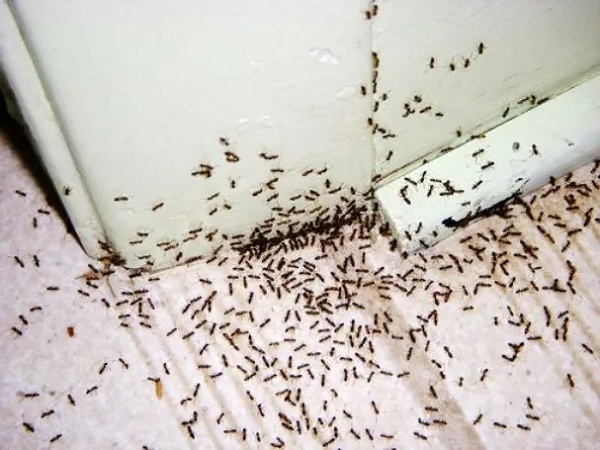
Drain Flies
The drain fly makes its home in the muck and mire of your drains, a place where you’d never expect to find a flying insect. If your sink or shower drain is slow or clogged, you may have a fly infestation because drain flies thrive on the decaying debris that lines these pipes.
Here’s what to do if you notice drain flies hovering near your bathroom or kitchen sink. Identify first from which sewer they’re escaping. There’s probably some sort of clog in that drain.
In order to get rid of the bugs, you’ll need to clear it first. Open the P-trap below the sink and use a pipe snake or pipe brush to remove the built-up slime, and then flush the drain to ensure the clog has been completely flushed away. (This is a recommended clog remover.) Re-seal the system and follow up by pouring an enzyme cleaner down the drain to kill any remaining drain fly eggs and break down any remaining residue.
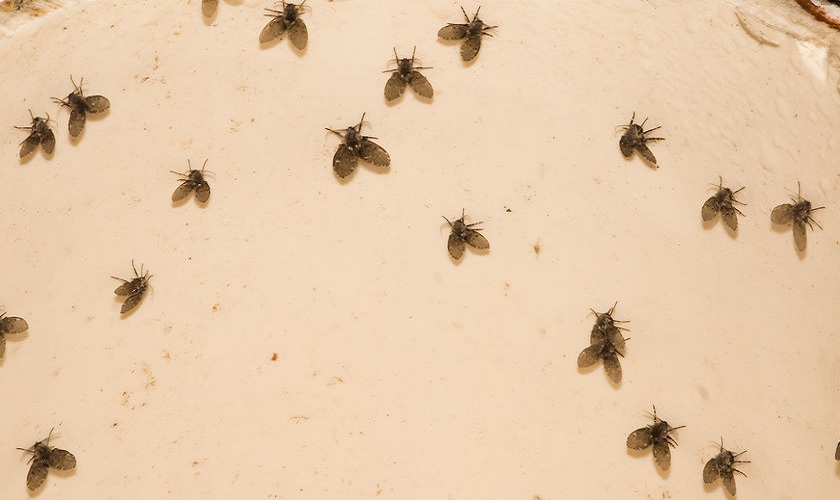
Silverfish
One bug you definitely don’t want to see inside is the shiny and slithering silverfish. This pest is particularly fond of cardboard boxes, fabric, paper, and glue. Because silverfish are so resilient (they even predate the dinosaurs), they can be difficult to eradicate once they’ve established themselves in your home.
But you can get rid of them with traps, insecticides, or even something natural like boric acid or diatomaceous earth. Make a few minor adjustments to make your home less inviting to silverfish. Get rid of the stacked newspapers, junk mail, and outdated cardboard boxes.
Put clothes and supplies for the off-season in plastic bins. Take dry goods out of their boxes and put them in containers with lids that fit tightly.

Dust Mites
Though they may not be welcome, dust mites are a fact of life in every home. Dust mites, which thrive on flakes of dead skin, are a common problem in carpets, upholstered furniture, beds, and even children’s toys. Regular cleaning will reduce the number of mites but will not get rid of them entirely.
Be sure to vacuum your furniture and carpets on a weekly basis and wash your sheets in hot water once a week. Look to your freezer to get rid of dust mites from plush toys or delicates that you don’t want to wash.
Dust mites can’t endure temperatures below 32 degrees Fahrenheit for more than 48 hours, so placing the items in the freezer is an effective method of killing them.
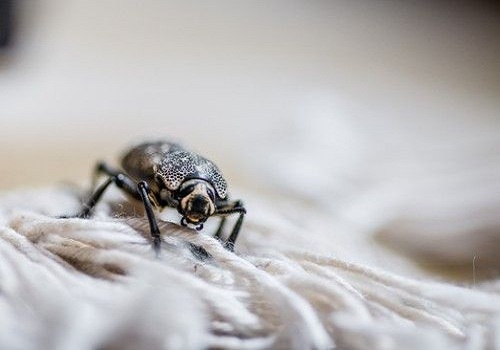
Centipedes
As it turns out, centipedes belong to the “good guys” category. They do not destroy your home or contaminate your pantry; instead, they feed on harmful insects such as termites, moths, and roaches. If you really can’t stand living alongside these neighbors with legs, you can either trap them or use insecticide around the windows and doors.
Meanwhile, you can lessen the likelihood of another invasion by clearing away any clutter around your home’s exterior and sealing any crevices they could use to sneak inside. Since centipedes thrive in damp areas, a dehumidifier could be a wise investment.


